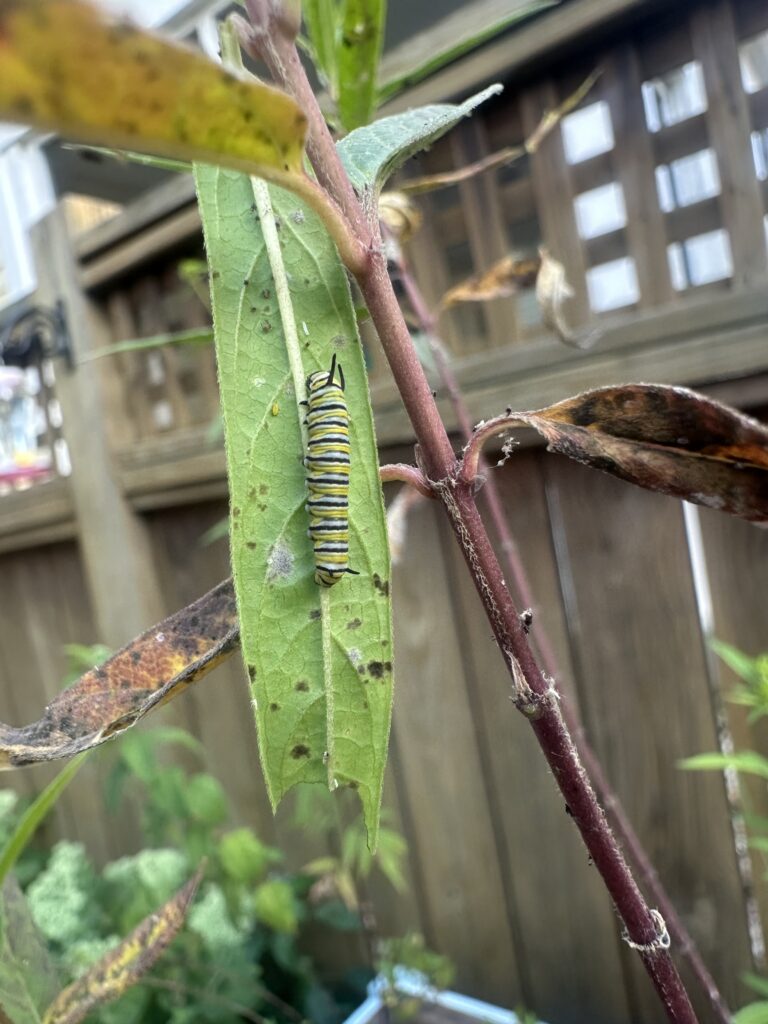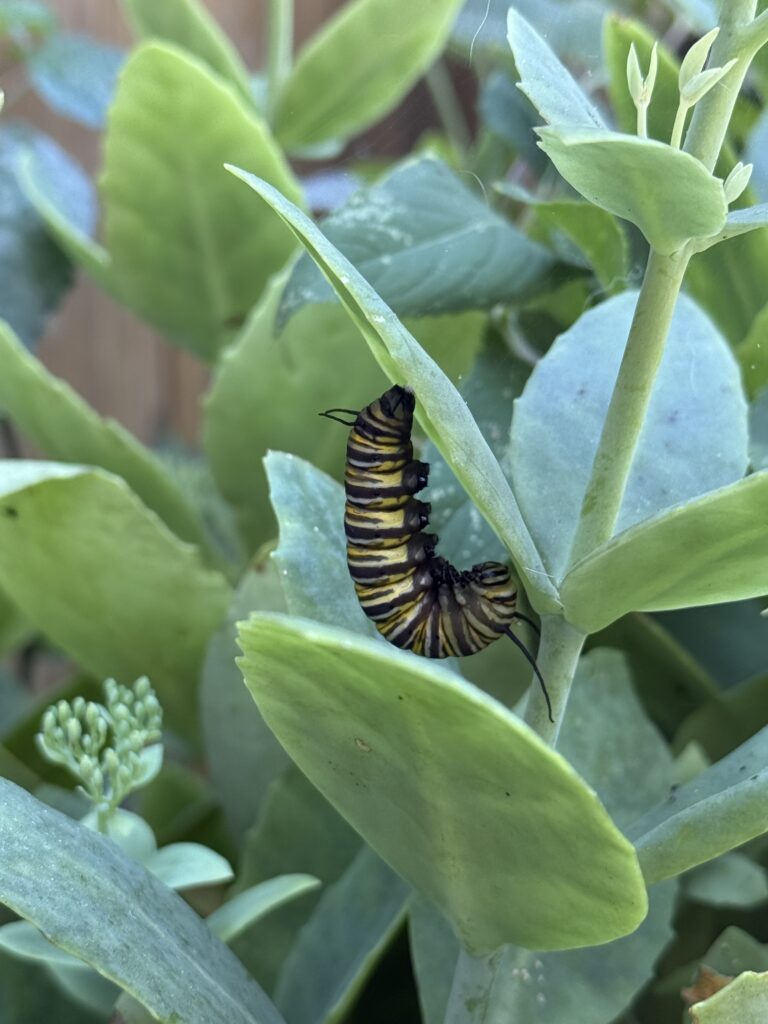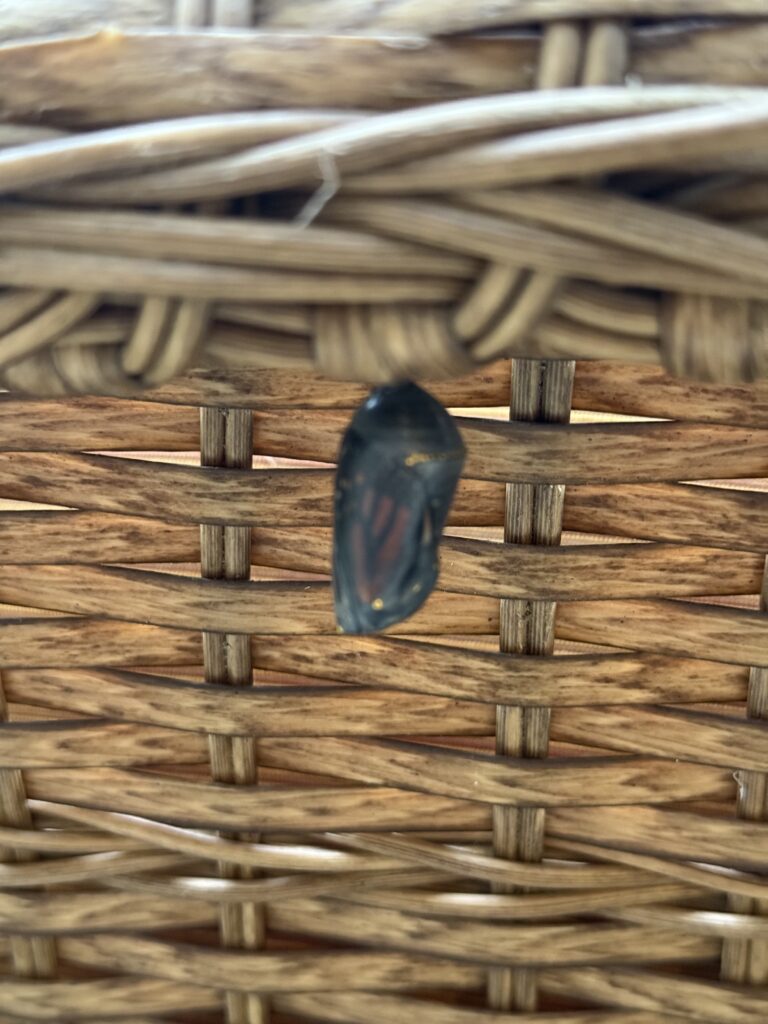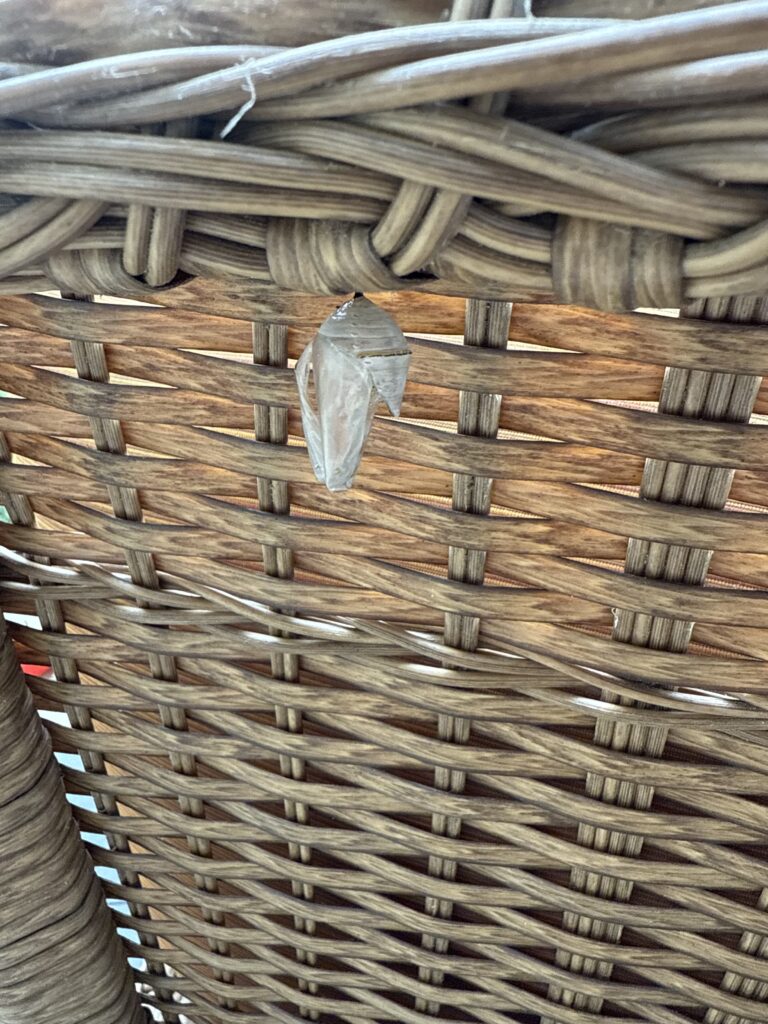Teach us to number our days. — Psalm 90
Day 1 (sometime early summer): Since it’s summer break, a neighbor sells native plants in the parking lot of a local school, and our daughter talks my wife, Ginny, into buying a few milkweed plants for her fairy garden. Upon returning home, our girl plants the milkweed alongside her rocks, sticks, mosses, grasses, and collection of tiny-winged plastic figurines. She turns to me with wide eyes and asks, “Do you think we’ll have butterflies?” I reply, “We will see.”
Days 2–60: Our daughter waters the milkweed intermittently, and most of the plants shrivel and die. In her defense, summer vacations, camps, and the swim team take her time away. Still, a few milkweed plants live. Now, I wonder if the fairies helped.
Day 61: Her first day of second grade.
Day 62: She bursts into the kitchen from the backyard, slamming the door against the wall, like I asked her not to do at least 62 times over the summer. But her excitement is unrestrained: “I found a caterpillar!” Ginny and I exchange a look: Could it really be true? Sure enough, a little yellow-and-black-striped guy is quietly munching his way up one of the last remaining milkweed leaves.
Day 63: We buy loads more milkweed from our neighbor after the internet reveals that a single caterpillar can eat three entire plants. They are worse than tween boys, two of whom also live in our house. The new plants come with more caterpillars. Our daughter dances around the yard.
Days 64–71: Despite our daughter’s afternoon vigils, wasps manage to kill multiple caterpillars. Others mysteriously disappear while she is at school. She blames me, not the fairies.
Day 72: The backdoor bangs against the wall! She has found a chrysalis! What’s more, we find other fat caterpillars climbing the fence in search of the perfect spot. Others are hanging upside down from leaves in the shape of an “L” or a backwards “J.” I think of the words Love and Joy.
Day 73: We come home to find a chrysalis suspended from the back of the loveseat in the yard, in a perfect viewing position from our kitchen window. I wonder if the fairies had something to do with it.
Days 74–92: More caterpillars die, but seven more chrysalises are discovered. Ginny says, “Our babies are growing up,” and it takes me a moment to realize she’s referring to the caterpillars and not our children. Our sons, generally too cool for their little sister’s escapades, are searching for chrysalises like they are Easter eggs. I research and discover that, inside the chrysalis, digestive enzymes break down the caterpillar body, then “imaginal discs” reconstitute the goo into a butterfly. In other words, it’s fairy magic.
Day 93: The chrysalis on the back of the loveseat has turned translucent and reveals the orange wing of the butterfly. Ginny and I spend our lunch break watching in hopes we will witness the hatching, but then we have to leave. By the time we return, the butterfly is gone, leaving only a broken grey sac hanging forlornly. While Ginny goes to get the kids from school, I go upstairs to make a work phone call. I end up lying down on my daughter’s bed. I know that, like butterflies and fairies, children eventually spread their wings. But then I hear the backdoor slam, and I can’t help but grin to myself.
 Andrew Taylor-Troutman is the author of the book with Wipf and Stock Publishers titled This Is the Day: A Year of Observing Unofficial Holidays about Ampersands, Bobbleheads, Buttons, Cousins, Hairball Awareness, Humbugs, Serendipity, Star Wars, Teenagers, Tenderness, Walking to School, Yo-Yos, and More. He lives in Chapel Hill, North Carolina where he is a student of joy.
Andrew Taylor-Troutman is the author of the book with Wipf and Stock Publishers titled This Is the Day: A Year of Observing Unofficial Holidays about Ampersands, Bobbleheads, Buttons, Cousins, Hairball Awareness, Humbugs, Serendipity, Star Wars, Teenagers, Tenderness, Walking to School, Yo-Yos, and More. He lives in Chapel Hill, North Carolina where he is a student of joy.
Chapelboro.com does not charge subscription fees, and you can directly support our efforts in local journalism here. Want more of what you see on Chapelboro? Let us bring free local news and community information to you by signing up for our newsletter.





